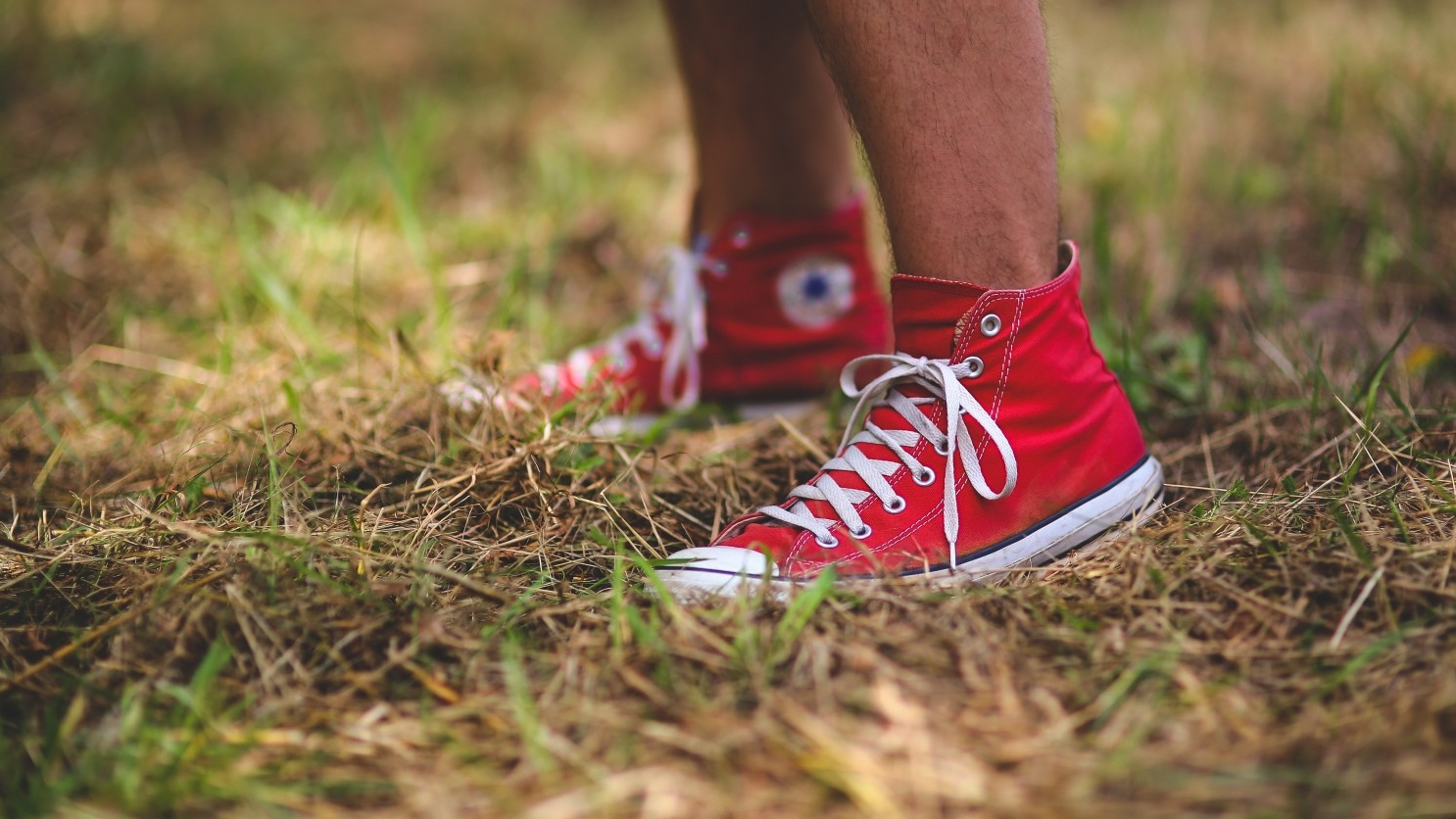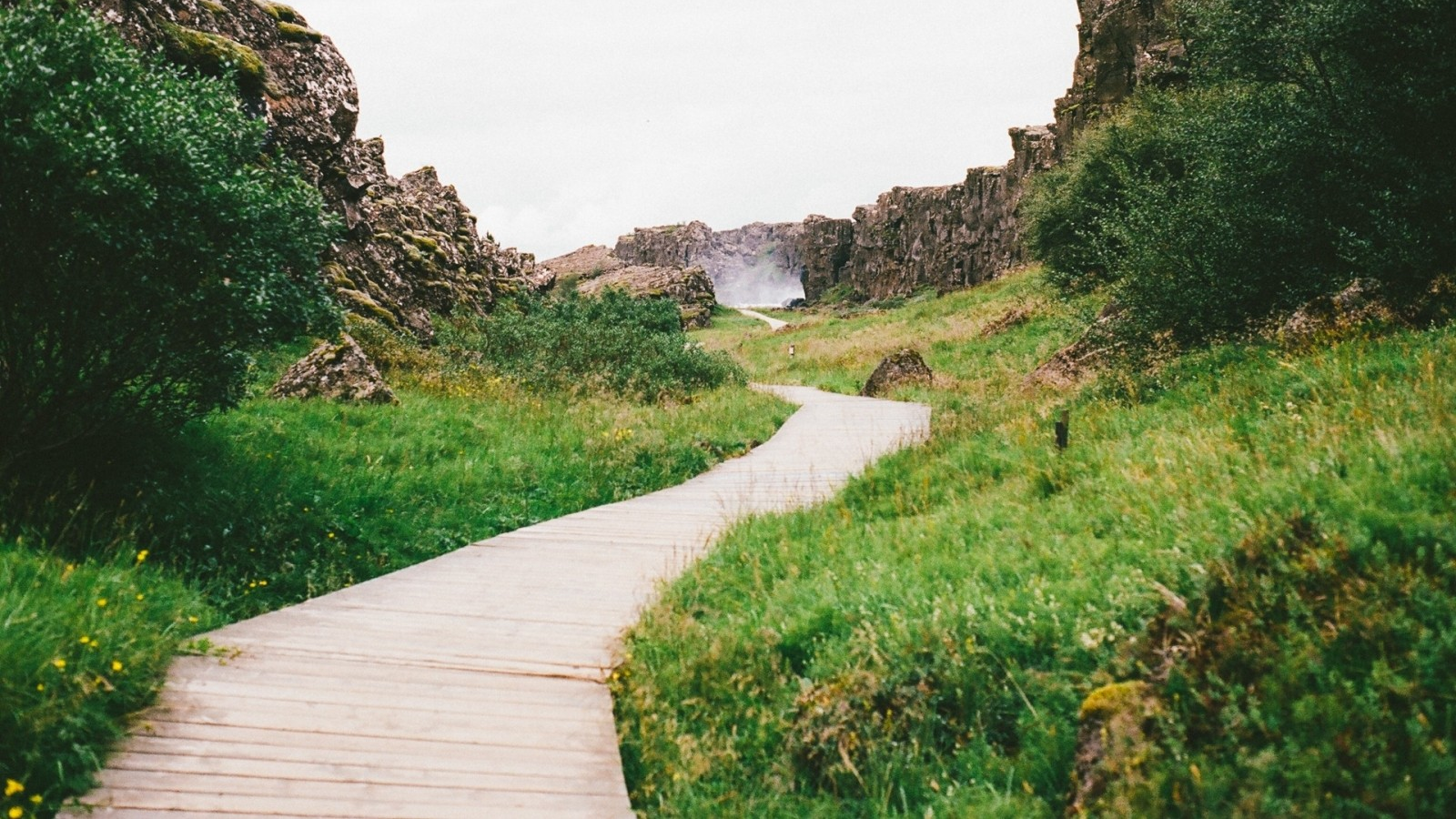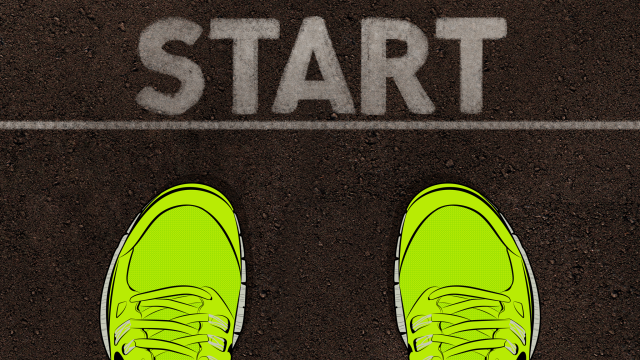Whether you’re joining our Lifehacker Fitness Challenge or just want the benefits running provides, you probably have some questions about how, exactly, you “become” a runner, beyond putting on shoes and going outside. Fortunately, we have answers.
Illustration by Sam Woolley. Photos via VisualHunt and by Georgie Pauwels
Choose Your Shoes

The first time you head out for a run, don’t overthink your shoes. Any old sneakers can carry you a few kilometres, as long as they’re reasonably comfortable. It’s OK to plan a short loop — running around the block, for example — if you want to make sure you can bail if your shoes turn out to be uncomfortable.
As you get into the habit of running, you’ll want to buy a pair of shoes that you don’t use for anything else. While there are lots of different types of running shoes at all price points, and just as many opinions on who should wear what, the bottom line is this: Whatever feels good when you run is the right shoe to wear.
To maximise your chances of finding the perfect shoes, go to a store that specialises in running — not athletics in general, but running. The best thing about running stores is that most will accept returns even if you’ve run a few kilometres and decided the shoes you bought aren’t for you.
Pick Out Your Clothes

As with shoes, your best beginner’s gear is whatever you already have. Grab comfortable workout clothes, say shorts and a tank top if the weather is warm. On a cool day, you might want leggings or sweatpants along with a long sleeved T-shirt. In the rain, add a baseball cap. In general, you’ll want to dress on the cooler side so you’ll be comfortable once your body heats up. This tool from Runner’s World can help you figure out the perfect outfit.
When you’re ready to buy clothes specifically for running, make sure you have two outfits (so you don’t have to do laundry every time you run) and aim for comfortable clothes in synthetic fabrics that don’t collect sweat. You can pay a ton for high quality workout gear, but there are great bargains to be had at discount stores. And if you’ve grabbed something from the back of your closet that seems to be working just fine, there’s no need to replace it if it keeps you happy. Don’t overcomplicate your clothes, despite what athletic gear marketing may tell you that you need.
If your anatomy requires a sports bra, be aware that this can be a tricky thing to shop for. The same bra that works fine for yoga or cycling may not be up to the task (unless you add an extra support band). In general, look for a wide band and wide straps, full coverage cups and a snug fit.
Plan Your Route

In theory, you can run anywhere. In the real world, though, not everyone has a perfect running route just outside their door. If you live in a city, check out our tips for safe urban running. And if you love nature, find some trails and enjoy their beauty and unique challenges.
You can also get a workout without roaming. Athletics centres have running tracks that are open to the public at least some of the time — perfect for intervals and other speedwork. And if you have access to a gym, don’t forget the treadmill. It can get boring, but mental tricks like 400m checkpoints can help to keep your attention until you finish your run. Treadmills are great in bad weather, and parents take note: It’s a lot easier to drop your kids off at the gym’s babysitting room than to find a way to drag them with you on an outdoor route.
Keep Track of Your Progress
Smartphone apps are probably the easiest way to keep tabs on how much running you do, and how far and fast you run each workout. Just start up the app of your choice, like Runkeeper (a longtime Lifehacker favourite) or Nike+ Run Club (which I personally prefer). Ask your friends what they use, since half the fun is sharing your progress with others.
On the other hand, you may prefer a lower tech approach. A stopwatch and a paper diary can help keep your focus on the numbers that matter most to you, rather than the numbers that are easiest for apps to track. Try our bullet journal-compatible layout for an easy way to see your progress at a glance.
Make It a Habit

Your first few runs should be focused on just surviving with a smile. Once you start to build a habit, though, it helps to set some clear goals for yourself, and pick out a plan that will help you get there.
As you progress on your running journey, you’ll want to practise running fast, learn the importance of running slow and consider when you might be ready to run your first race. They will come in time, so don’t rush them, but they’re all great challenges.
Making sure you stay safe is also important. Your legs take thousands of steps even on a short run, and all that repetition adds up. Runners are prone to overuse injuries if we run too much before our bodies are ready for it. The rule of thumb is to increase your weekly distance by no more than 10 per cent at a time. For example, going from 15km last week to 16km this week is fine, but 15km to 30km is asking for trouble. In truth, you don’t have to be super strict about the exact percentage, but make sure that you work your way up little by little.

Comments
One response to “Everything You Need To Know To Start Running”
Just what I need. Thanks Beth